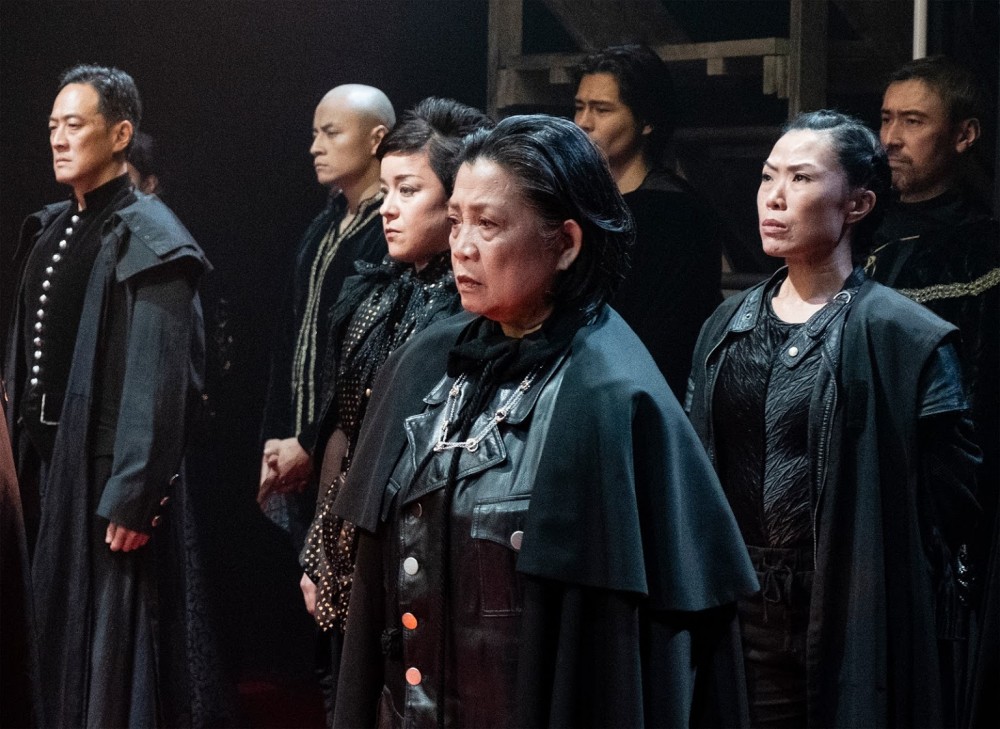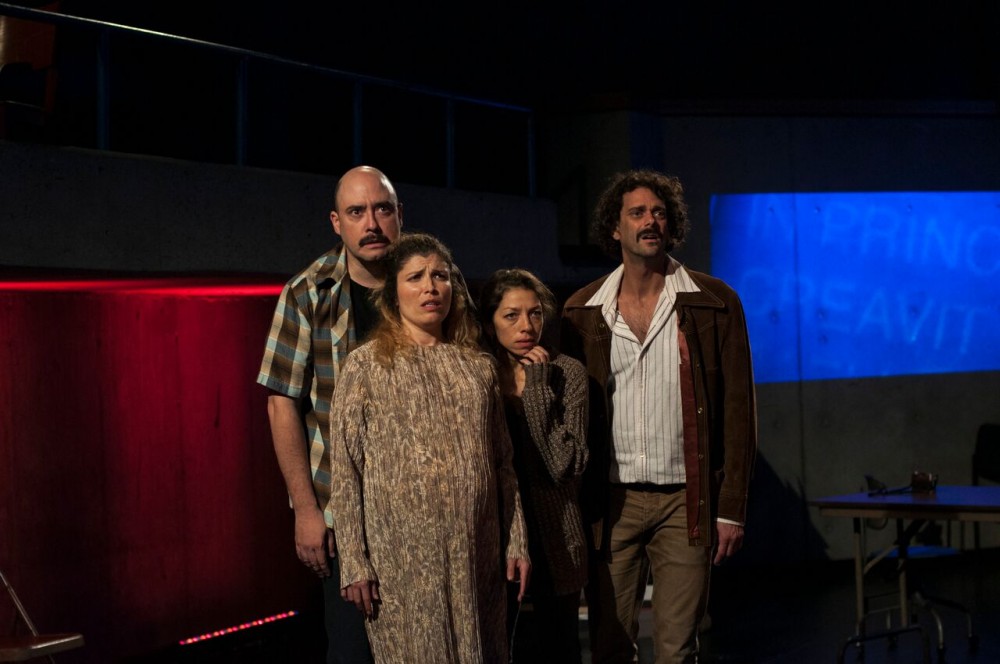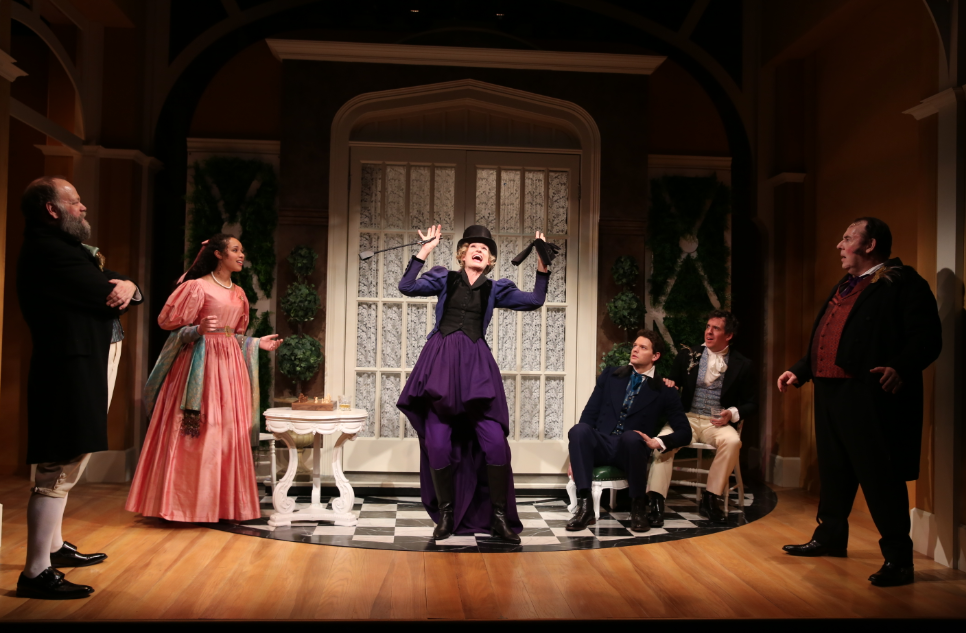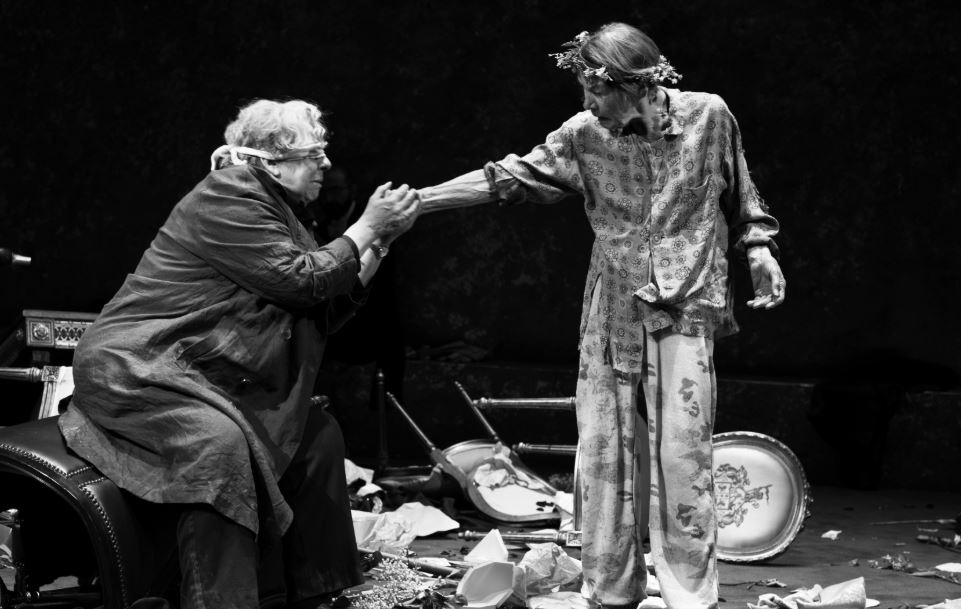
by JK Clarke
The three plays that make up Henry VI are among William Shakespeare’s earliest works. Presumably written in the early 1590s and said by some scholars to be collaborative works (with playwright Christopher Marlowe), they are marked by an abundance of gratuitous violence and convoluted storylines (and are, in fact, considered to be the source material for HBO’s popular Game of Thrones series). Because they’re not considered as strong as his other works, Henry VI Parts I, II and III are rarely performed; but, when they are, they’re usually synthesized into two plays, or are cherry picked and tacked on to the beginning of Richard III (which rounds out the War of the Roses tetralogy). So, it’s especially exciting to experience the National Asian American Theatre Company’s (NAATCO) mounting of this complex trilogy in two parts, adapted and directed by Stephen Brown-Fried—Henry VI Part I: Foreign Wars and Part II: Civil Strife—at The Mezzanine Theatre/A.R.T. New York Theatres through September 8. For both fans of battle-rich historical drama and Shakespeare aficionados looking to complete their canon, this production is not to be missed.
It’s easy to synthesize the basic plot of the Henry VI plays into a simple concept: a civil war over succession rights to the English crown. But once we dig into the details it gets a touch confusing. Fortunately NAATCO has pulled out all the stops to make the entire story as clear as possible. First, on their website they link to two YouTube videos that explain, in simple graphic terms, basic story background points. What’s more, they generously offer on several nights a pre-show prep series by experts in Shakespeare or Medieval studies.
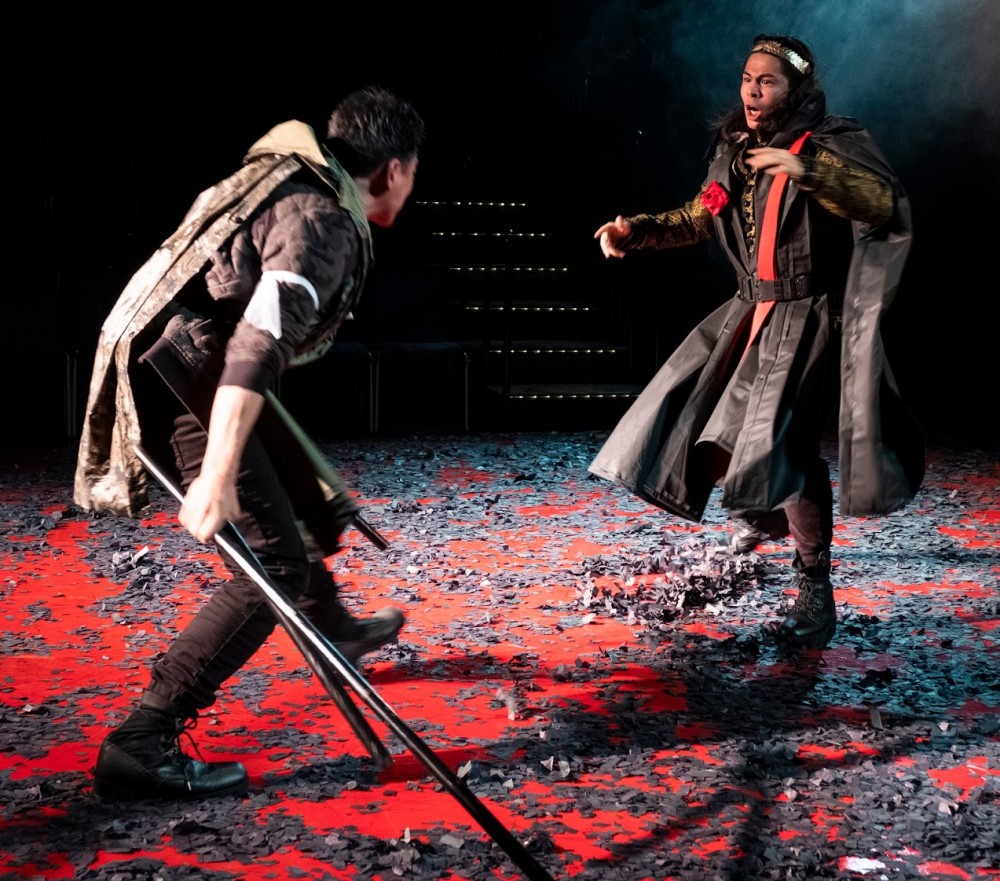

The story’s problem starts prior to this series, when the eponymous Henry’s grandfather, Henry Bolingbroke, the eventual Henry IV, takes the crown from Richard II and precipitates his murder. Then, when his son Henry V dies unexpectedly, his son, Henry VI (played with appropriately humble reserve by Jon Norman Schneider) inherits the crown; but because he’s an infant his uncle, Richard, Duke of Gloucester (Mia Katingbak) becomes Lord Protector of England. And, of course, everything goes wrong at once. Rebellion in the French territories (conquered by Henry V) erupts, with Joan la Pucelle (aka Joan of Arc, played by Kim Wong) leading, and misleading French troops. Simultaneously, Henry VI’s uncle Richard Plantagenet, Duke of York (the excellent Rajesh Bose) gets into a disagreement with the Duke of Somerset (Anna Ishida)—a white rose is chosen to represent York and a red rose is worn by Somerset’s supporters—and a civil war is born.
Leaving all the detail aside (this could go on for pages), Henry VI is ultimately overthrown, his son is murdered, his uncle is murdered (along with countless others) and Richard of Gloucester, the eventual relentless and vicious Richard III begins his destructive pathway to the crown. As difficult and complex as it sounds (and is), Brown-Fried has done an exemplary job of creating two comprehensive plays that are easy to follow and move at a very reasonable pace (Part I is three hours and Part II clocks in at two hours forty minutes—both have a ten minute intermission).
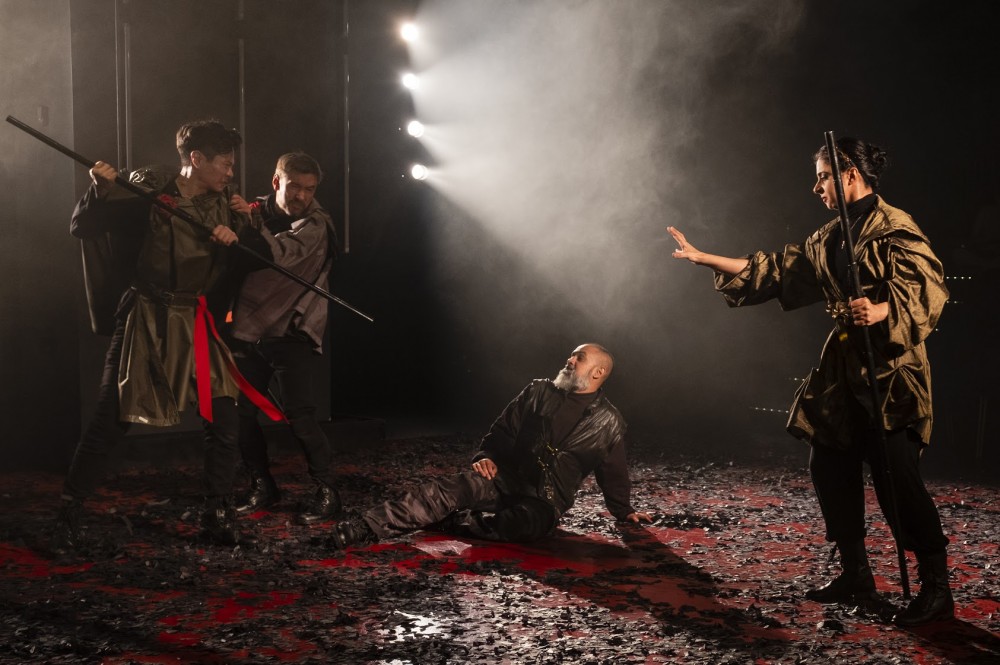

But the standout in these productions is the absolutely fantastic staging, which lends an intensity and excitement to the plays that might otherwise have been lacking. The highly stylized combination of set, lighting, costumes and sound all coalesce to transport the audience into the 100 Years War (mid-15th century), with surprising ease. Kimie Nishikawa’s somewhat minimal but powerful set elements—in particular a collection of cross-bottomed, wooden stanchions, wrapped with coils of thick rope at the top—serve a range of purposes. They are barriers, pathways, weapons thrown across soldiers’ shoulders and, remarkably, the severed heads of the recently decapitated or hung enemies (one can’t help thinking of the recent brutalities of ISIS). Purely symbolic, they stand in convincingly for any desired prop. And one can’t ignore the thick black paper shards strewn across the red floor throughout the two plays, undoubtedly symbolizing the charred petals of the red and white roses, laid across a field of blood. It’s appropriately hard-hitting. The set is gorgeously enhanced by Reza Behjat’s stunning, battle-perfect lighting that should be considered for any eligible award next spring. It ranges from an electric fluorescent interior to the tilted rays of a smoky sunset. Nicole Slaven’s severe, black (without being fascistic) costumes that somehow feel simultaneously medieval and modern, portraying power of the nobility and contrasting gorgeously with the brownish hues of the lower classes fit in perfectly. Add to this Toby Algya’s realist sound design, as well as powerful fight choreography (Orlando Pabotoy, Kimye Corwin), often performed in a balletic slo-mo that sometimes feel more like an elegant modern dance performance than an historical drama.
The cast itself, so bolstered by the powerful stagecraft, features standouts who make ordinary roles—and there are several extraordinary characters, like Queen Margaret (Mahira Kakkar) and Jack Cade (Ron Domingo)—rise above their usual prominence in the plays. James Seol (Young Clifford and many other roles), David Huynh (Richard, Duke of Gloucester), Vanessa Kai (Earl of Warwick) and Wai Ching Ho (Bishop of Winchester, Duke of Somerset) manage to differentiate and elevate their myriad characters distinctively, adding unique and powerful touches to each.
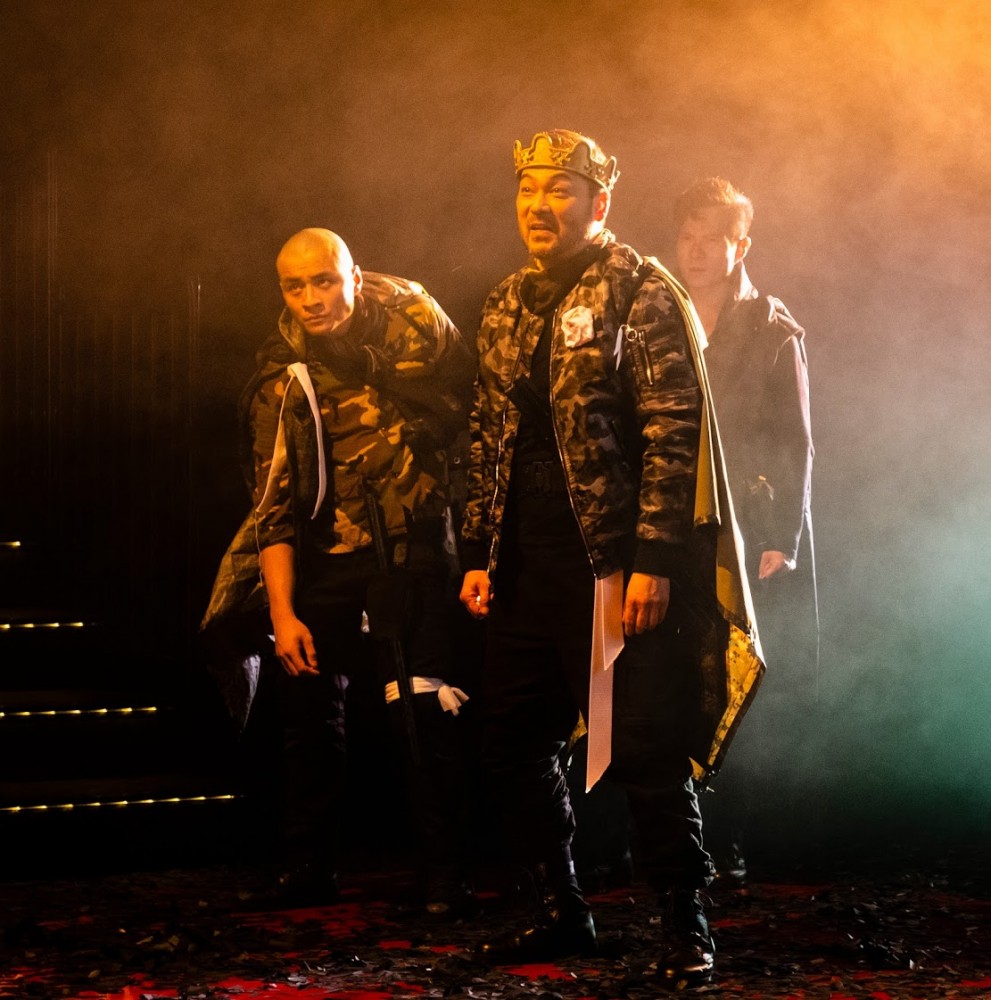

On a further note, the cast’s diversity adds an interesting element to the play: where normally the roles are mostly white European men, this production exposes more than usual the universality of Shakespeare’s themes of war and avarice. These stories are not important because of their historical significance, but rather because these are themes repeated throughout history. It’s one of the most important lessons of the Shakespearean experience and NAATCO choosing these plays emphasizes it even more.
It’s a shame this magnificent production isn’t slated to run several weeks longer than it is. The tremendous amount of work that’s gone into its preparation should be given more exposure. And word of mouth will undoubtedly draw more and more fans of the genre, providing a rare experience of a thrilling and beautifully produced examination of Shakespeare’s earliest historical dramas.
Henry VI – Foreign Wars and Henry VI – Civil Strife. In Repertory through September 8 at The Mezzanine Theatre /A.R.T. New York Theatres (502 West 53rd Street, between Tenth and Eleventh Avenues). www.naatco.org
Photos: William P. Steele


